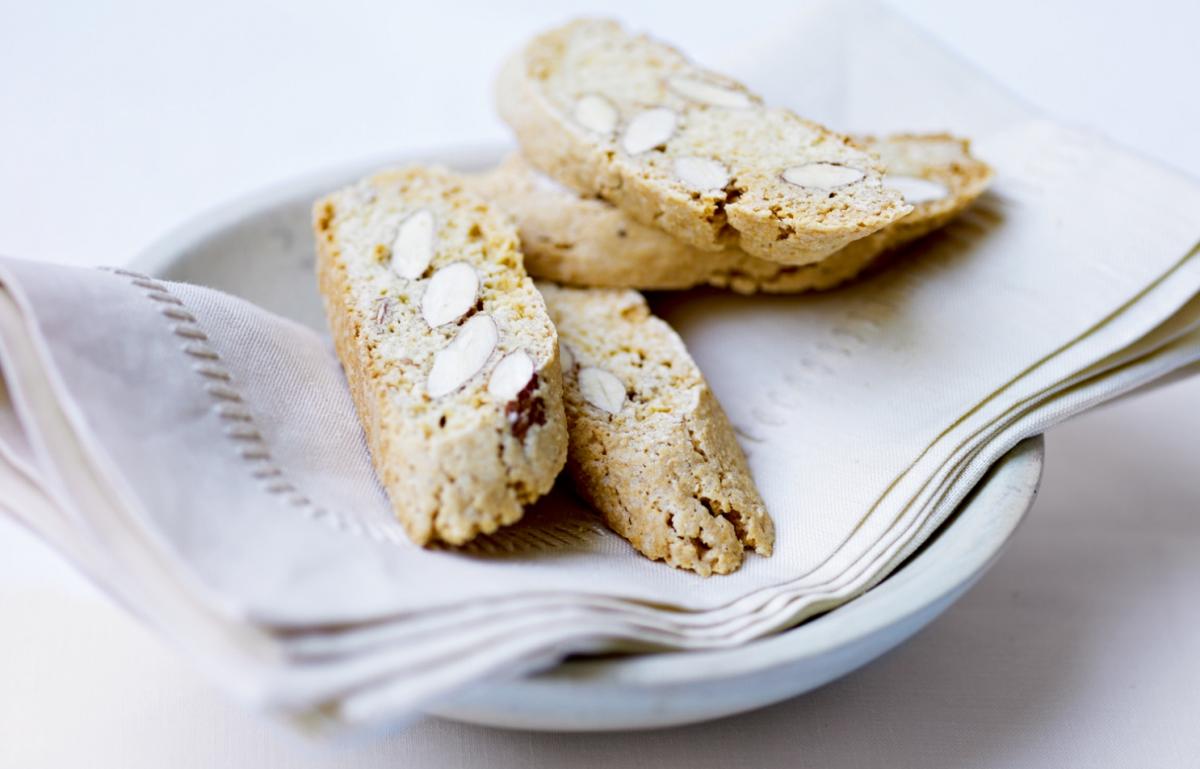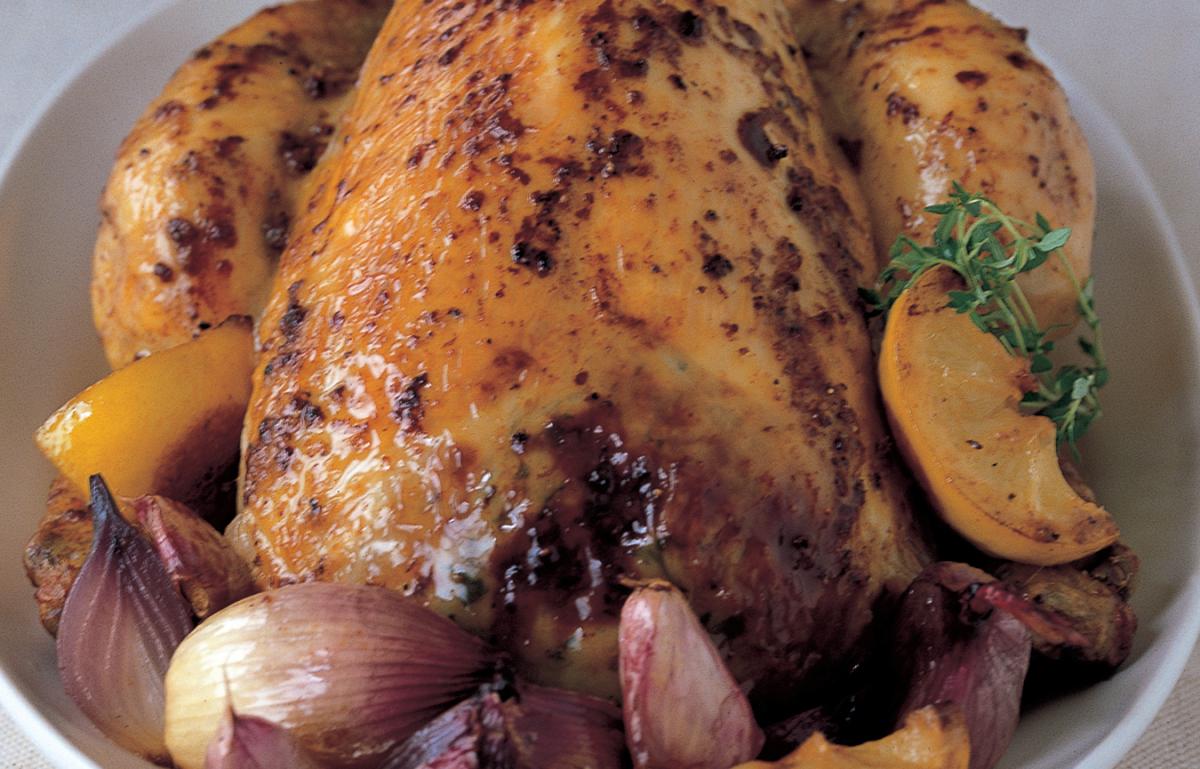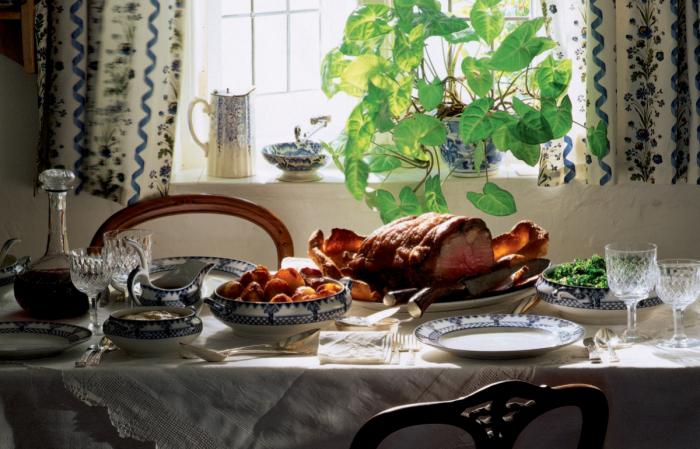


I still think the roast beef of old England, served with meaty gravy, crisp Yorkshire pudding and crunchy roast potatoes, is not only one of the world's greatest meals, it is something the British do better than anyone else. The cut of beef for roasting is of great importance – if it's a very special occasion I would go for a sirloin joint on the bone with the fillet still in it, but for a family Sunday lunch the next best cut is the wing end of the sirloin, otherwise known as rib of beef. If you want to serve 6-8 people and have some left over, you'll need a piece weighing approximately 5-6 lb (2.25-2.75 kg) – this would be 3 ribs. Beef on the bone is great as the bone acts as a conductor of heat and gives the roast extra flavour. Pre-heat the oven to gas mark 9, 475°F (240°C).
A layer of fat on the beef provides not only basting juices to keep the joint moist and succulent, but you can choose to eat it if you so wish. To make the fat extra crusty during cooking, dust the fat surface of the beef with 1 level dessertspoon each of English mustard powder and plain flour – just rub them in gently – then season with salt and pepper.
Place the joint in a roasting tin on top of 2 small halves of onion. The onion will caramelise as the beef cooks and give a lovely flavour and colour to the gravy. Now place the meat on a tray just above the centre of the oven. It will have plenty of fat so don't add extra. Give it 20 minutes' cooking at the initial temperature; after that turn the heat down to gas mark 5, 375°F (190°C) and cook it for 15 minutes to the pound (450 g) – this will give you rare beef. Add 15 minutes to the total cooking time for medium rare and 30 minutes for well done.
While the beef is cooking, lift it out of the oven from time to time, tilt the tin and baste the meat really well with its own juices – this ensures that the flavour that is concentrated in the fat keeps permeating the meat, and at the same time the fat keeps everything moist and succulent. While you're basting, close the oven door in order not to lose heat. Baste the meat with the juices at least three times during cooking.
To see if the beef is cooked to your liking insert a thin skewer into the thickest part of the joint and press out some juices: the red, pink or clear colour will indicate how much the beef has cooked. When it is cooked to your liking, remove it from the oven, transfer it to a board and allow it to stand in a warm place for up to an hour, loosely covered with foil, before carving – to let all the precious juices that have bubbled up to the surface seep back into the flesh. Also, as the meat relaxes it will be easier to carve. Some of the juices will escape, though, and these should be poured into the gravy. The finishing touch is to serve the succulent beef with Yorkshire pudding, gravy, seasonal vegetables and creamed horseradish.
Follow us Like us on Facebook Follow us on twitter Follow us on instagram Follow us on pinterest Follow us on youtube
© 2001-2024 All Rights Reserved Delia Online